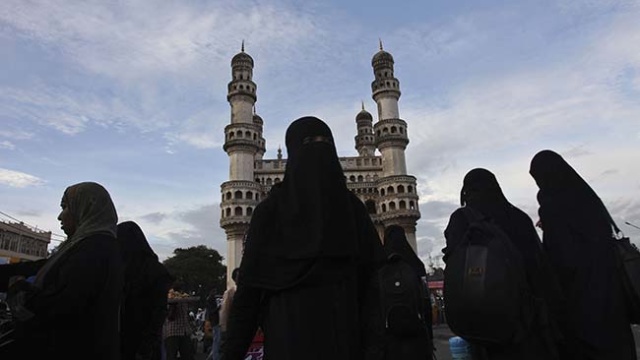August 22nd 2017, as it is said, was a day of immense significance. The Supreme Court gave the much awaited judgement and made instant Triple Talaq unconstitutional. In a heterogeneous country like ours with a history of complex relationships between two major religious communities, the judgement has provoked multiple reactions- emotive, political, gross and subtle. We feel that the issue needs to be seen with greater depth and clarity which more often than not television channels or even mainstream newspapers tend to miss. It is in this context that The New Leam editorial team has chosen to throw light on four central issues relating to judgement on Triple Talaq and its socio-political context.

ISSUE 1: HOLLOWNESS OF SECULARISM AND PROVOCATIVE COMMUNALISM
Is it not the irony of our times that this judgement on instant Triple Talaq- a practice that by no stretch of imagination is human or gender sensitive-came during the regime of a political ideology known for its inclination to militant majoritarianism and Hindu religious nationalism. It is possible for the secularists to see a motive behind this act. It is like arguing that Hindu nationalists were interfering into the personal laws of the Muslim community and also trying to project themselves as ‘saviours’ of Muslim women. Even of this holds true a question remains unanswered, why is it that ‘secular’ governments did not try to abolish this ugly, brutal and patriarchal practice. The fact is that these secularists have also played with the minorities. Instead of a genuine, emancipatory engagement, they have reduced the minorities into abstracted categories for constant manipulation. The result is that even though you talk about Muslims and minorities, their conditions as the Sachaar Commission Report revealed remains grim. Ghettoization, marginalisation, poverty, brute patriarchy and complete dissociation between the Muslim elite and the Muslim masses characterize their social conditioning. And hence if today under the Hindu nationalist regime a judgement of this kind has come secularist too have to look at themselves and the politics they played.
ISSUE 2: MINORITY EXISTENCE, PSYCHIC VULNERABILITY AND IDENTITY MARKERS
We have also witnessed an extreme form of counter reaction by a group of Muslim clergy. Their discontent with the way things have taken a turn, and their apprehension that it is an invasion into their intimate domain of religious identity needs to be contextualised and probed.
One possible reason, we believe is that in the context of a problematic relationship with the majority community, the minorities often feel vulnerable. As social psychologists argue, this vulnerability or survival anxiety causes an urge to hold on to a set of symbolic and identity markers for retaining their distinctiveness. In contemporary India this assertion of identity markers can be seen everywhere. Even a walk through the lanes of posh park circus in secular Kolkata would indicate how these days both Muslim men and women are becoming increasingly conscious of certain identity markers which are distinctively visible in their sartorial choices. Is it a kind of message that a vulnerable minority community should be compelled to draw? The answer, it seems lies in a truly dialogic and egalitarian culture in which there is neither the tyranny nor majoritarianism neither the ghettoization of the minorities.
This requires an intensely communicative public sphere filed with common school and education.
ISSUE 3: REFORM AND CONTEMPLATIVE CHURNING
In colonial India a process of socio-religious reform gave a new meaning to the dynamics of Hindu culture. Dayanand Saraswati, Jyoti Rao Phule, Periyar, Ambedkar and Gandhi- the awakening that they generated created a new sensibility against caste hierarchy, religious superstitions, dogmas, Sati, child marriage etc. Even though these ugly practices continue to prevail the fact is that there was a conscious attempt to do away with these and a need was felt for constant reform. Gandhi expressed it beautifully as he said, ‘If my conscience does not permit I wouldn’t approve of a practice even if the religious scriptures have sanctioned it.’ However the process of inner churning and access to new education was relatively less among the Muslim community even Sayed Ahmad Khan’s efforts remained limited to upper caste Muslim elites. Even today, history is repeating itself. What we notice is that the Muslim cultural landscape in India is characterised by three aspects – the orthodox clergy governed by extremely non-critical, non-reflexive interpretation of Koranic theology, the world of successful urban, upper class Muslim elite well incorporated with the system and the large section of Muslim masses with utter marginalisation, humiliation and a sense of insecurity. The fact that no sustained reform came from within is something that possibly lead to a situation in which the Supreme Court had to give a special judgement.
ISSUE 4: RELIGIOUS INTERPRETATION AND THE ABSENCE OF WOMEN’S VOICE
As usual after the judgement a group of orthodox Muslim clergy argued in the name of the autonomy of the community. However the fact is that this community is not a cohesive one; it has its internal cleavages; and one important cleavage is between subdued women and hegemonic men with the sole right over interpretation of religious traditions.
This is not unique to only Islam and all major religious tradition display the same trait. That is why the argument in the name of community is not always convincing. Women’s voices, their interpretations and their reflexivity ought to become an integral component in the movement of self-respect.
As a multicultural society we can live peacefully, and with shared symbols as well as distinctive cultural traits only when we gain emancipatory education, political clarity and the ability to fight the manipulative politicians of ‘professional’ politicians and obscurantism of institutionalism priest craft. This implies a quest for a healthy, politico-spiritual freedom. The Supreme Court judgement is just the tip of the iceberg.
The New Leam has no external source of funding. For retaining its uniqueness, its high quality, its distinctive philosophy we wish to reduce the degree of dependence on corporate funding. We believe that if individuals like you come forward and SUPPORT THIS ENDEAVOR can make the magazine self-reliant in a very innovative way.














